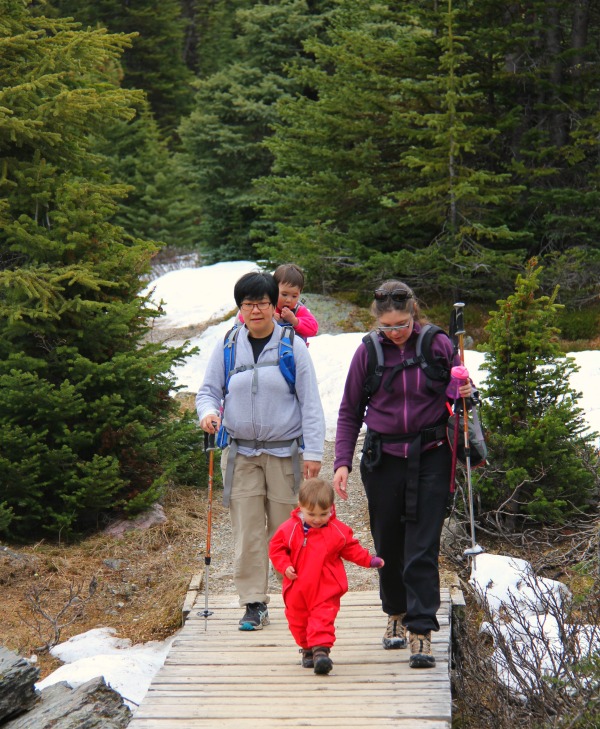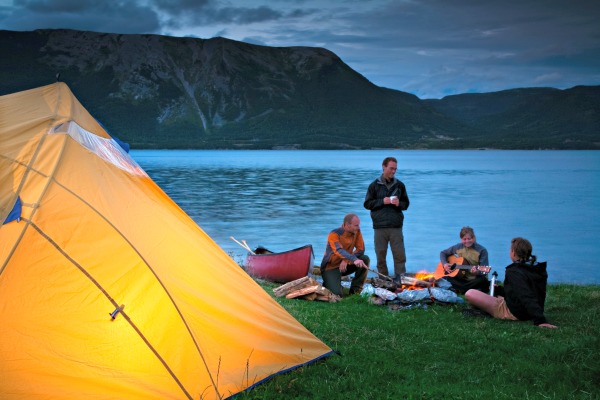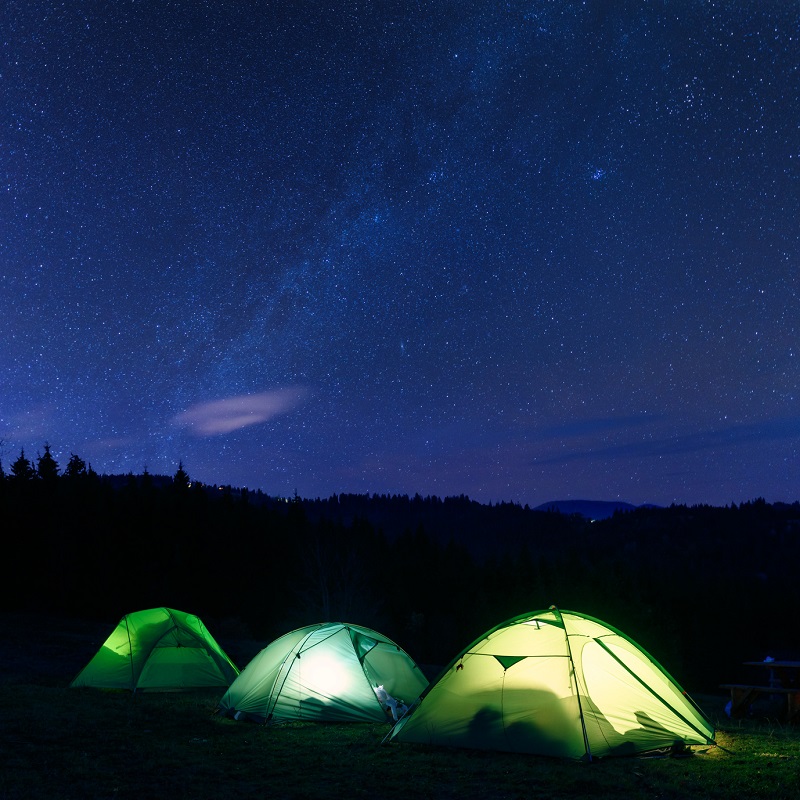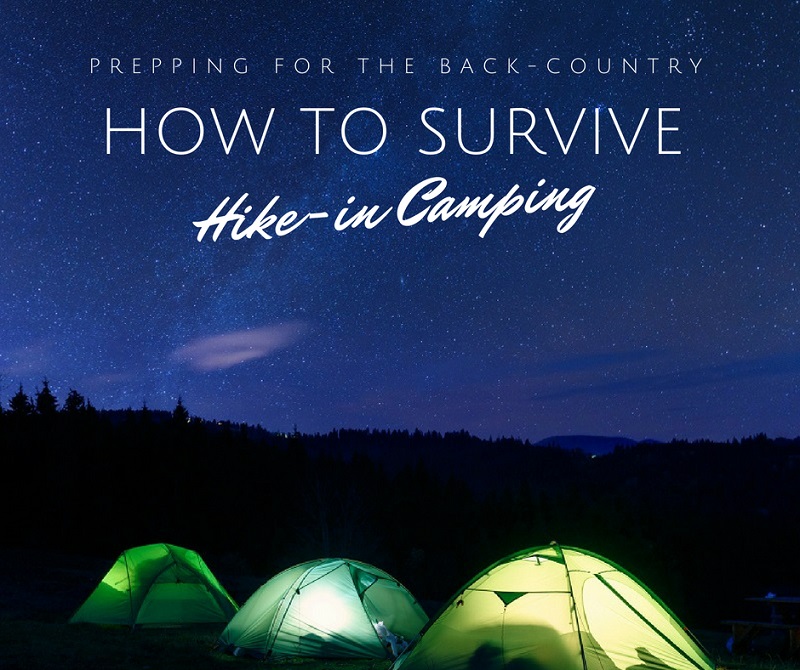If your family is bored with regular camping, is looking for a new hiking challenge, or just wants to commune with nature, you may want to consider a hike-in camping trip.

Before venturing out, it is strongly recommended your family take wilderness and survival lessons, as well as First Aid and Leave No Trace training. Classes are often available at sporting and outdoor equipment stores, hiking associations, or even your local Red Cross. Proper planning and preparation beforehand is key to having a hike-in trip that is memorable for all the right reasons.
Finding the Best Location
For your first time in the backcountry, you probably want to choose a place you know, such as a trail you’ve day hiked. Consider the terrain and how easy it will be to navigate with your gear, as well as any potential threats from wildlife.
Many wildlife parks have hike-in areas with designated camping areas, and some even offer huts along multi-day trails. Mark your trail and destination on your map, and bring a different coloured pen in case you change your route. Always tell someone where you are going and when you should be back.
Watch weather reports for the location in the days leading up to your trip, and stay conscious of the conditions as you go.

Camping at Gros Morne National Park
Credit Parks Canada- Dale Wilson
What to Pack
Once you know the anticipated terrain and weather, you can build your packing list accordingly. Here are some of the most basic items you’ll need:
| Backpack with frame | Sleeping bag | Multi-tool and/or repair kit |
| Light-weight tent & tarp, or tarps & pole(s) |
Sleeping pad | Waterproof bags |
| Map & compass (& the skills to use them!) |
Pot & grabber | Rope or lightweight cord |
| Waterproof matches & fire starter | First Aid kit | Biodegradable soap |
| Biodegradable toilet paper & trowel | Knife | Sun & insect protection |
| Water purification treatment or filter | Whistle | Food pole (for hanging food) |
| Bag or container for garbage, including food waste |
Headlamp and/or flashlight; extra batteries |
Utensils, dishes & cups |
| For women – a pee wedge so you don’t have to squat |
Change of clothing in sealed plastic bag |
Light-weight stove & fuel (if you cannot have a fire) |
Test all of your gear at home. Walk around carrying a fully laden backpack, in the shoes/boots you plan to wear – the wrong footwear and too heavy a pack are common first-timer mistakes.
Food & Water
Food and water are literally the fuel to power your transportation, so you’ll want to pack calorie-dense and high-protein foods. Fruit, nuts, granola, chocolate, jerky, macaroni and cheese, and dehydrated or freeze-dried foods are all popular choices.
Everyone should have at least 32 ounces of water on them at all times. If you are able to get water along your route, that’s less weight that you need to carry in. Just be sure to purify it in the way recommended for that source.
These are some very basic tips on getting ready for your first overnight hike in the wilderness. If you’re well prepared, your family can focus on enjoying the journey. There is nothing more magical than sharing an awe-inspiring sunrise over mountain peaks or the dazzling Milky Way with those you love.






